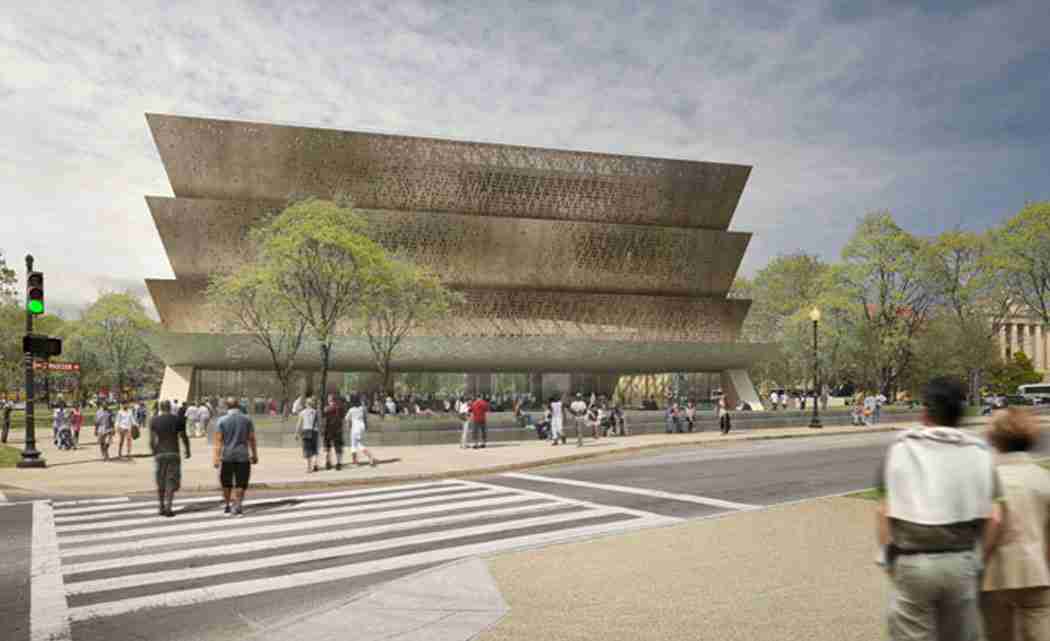By BRETT ZONGKER
Associated Press
WASHINGTON — With a bronze metal and glass structure taking shape on the National Mall, the Smithsonian Institution said Thursday that its new National Museum of African American History and Culture is on track to open in 2016.
Over the past two weeks, workers have begun installing the bronze-color panels that will form the defining “corona” facade of Washington’s newest museum. The idea was inspired by an African headdress. Architects said it will appear as a glowing bronze crown in different lights.
The design is a significant departure from the mostly classical structures of Washington. Museum Director Lonnie Bunch said the idea for the metal lattice panels was meant to evoke the work of enslaved craftspeople and iron workers who created screens and designs popular in New Orleans and Charleston, South Carolina.
“So much of the African-American experience is hidden in plain sight,” Bunch said during a briefing on the museum’s progress. “I thought: Wouldn’t it be powerful to take this building and in some ways make it a monument to all those people whose work shaped this country, whose work made the country possible but whose work is often forgotten.”
After 10 years of work to develop the museum, Bunch said the building has reached a milestone as its defining elements become evident. The building is 18 months from completion. Bunch said he’s determined the museum will open before President Barack Obama leaves office so that the nation’s first black president can cut the ribbon.
The Smithsonian has raised $476 million in public and private funds. Congress provided half the building funds and money for staffing, and about $200 million has been raised privately from corporations, foundations and individuals. The Smithsonian still must raise as much as $70 million more to finish the project, Bunch said.
Numerous individual donations of $25 and $50 have shown how important the museum is to so many people, Bunch said. Nearly 82,000 people have joined the museum as members to contribute to the building, representing every state.
The museum has built a collection of 40,000 artifacts, and a staff of 160 is developing the 11 major exhibits that visitors will find at the opening next year. The exhibits will trace the history of slavery, segregation, civil rights and African-Americans’ achievements in the arts, entertainment, sports, the military and the wider culture.
Bunch said it will be a museum for everyone to gain a fuller, more nuanced understanding of history.
“The strength of this museum is that it seeks to use African American culture as a lens to understand what it means to be an American,” he said. “We’re all shaped by the African-American experience.”










No Comment